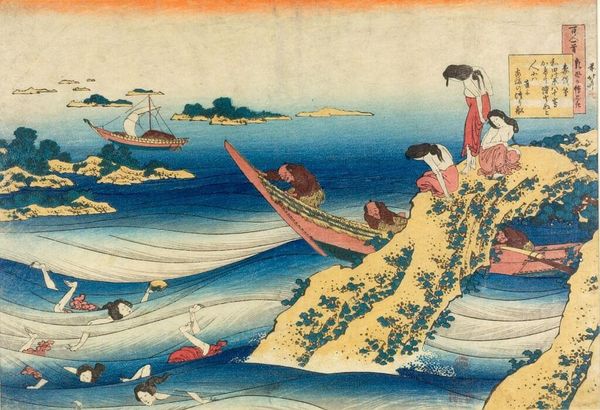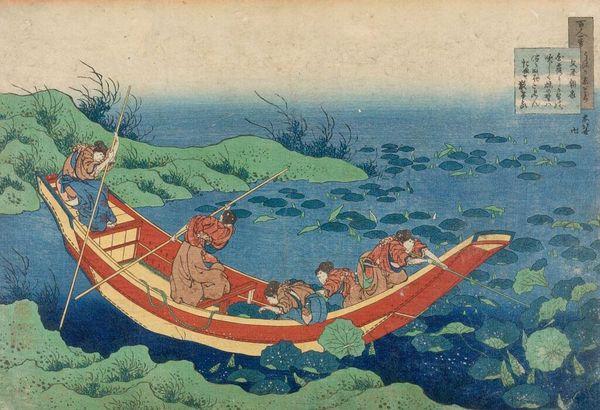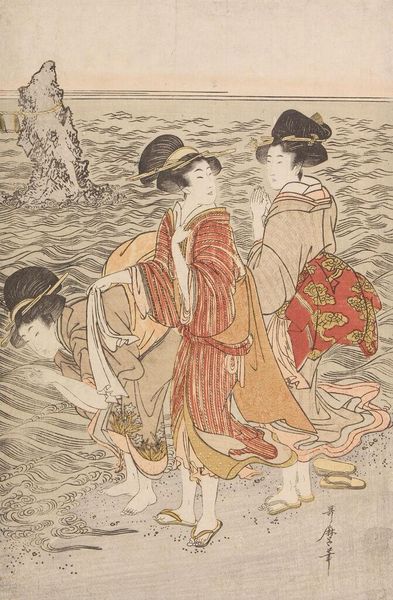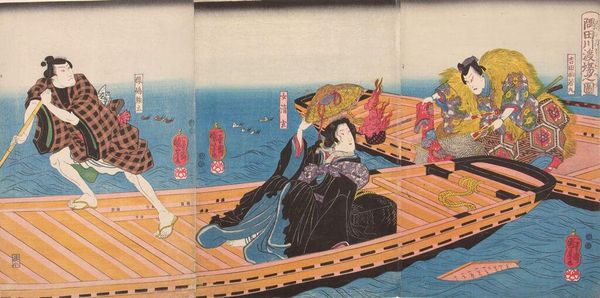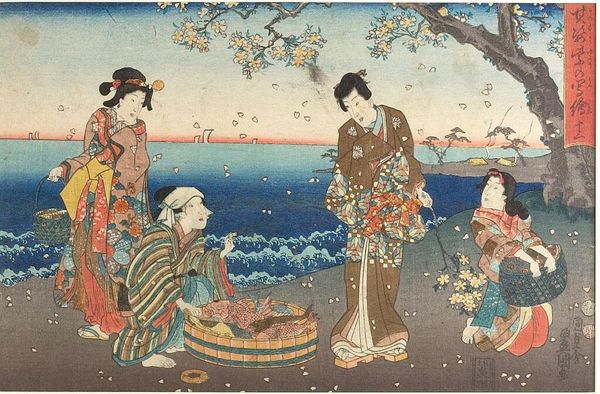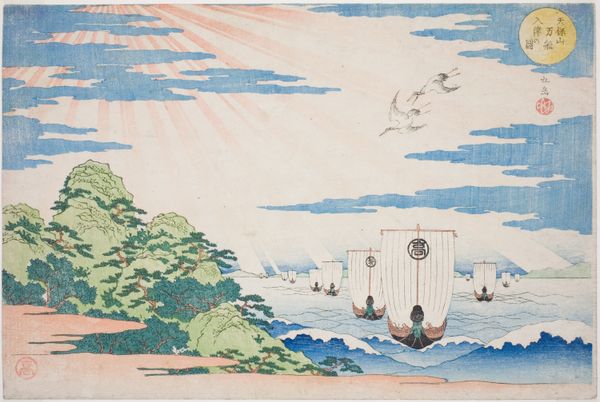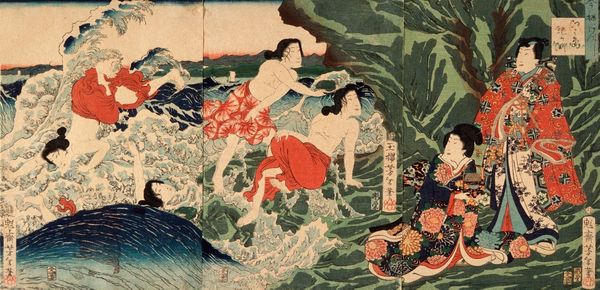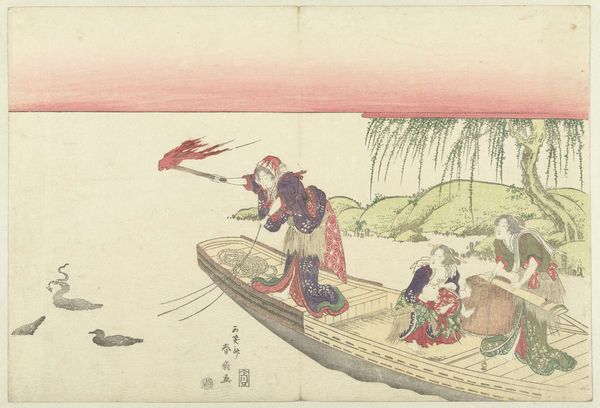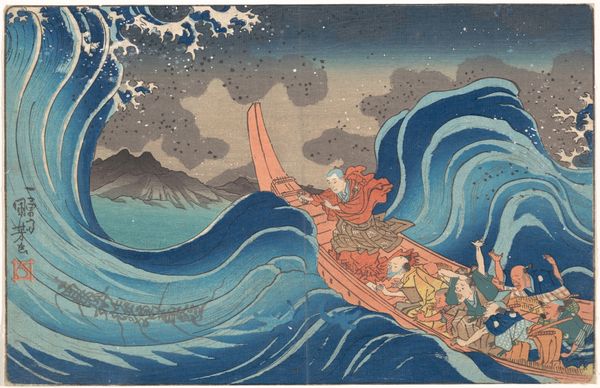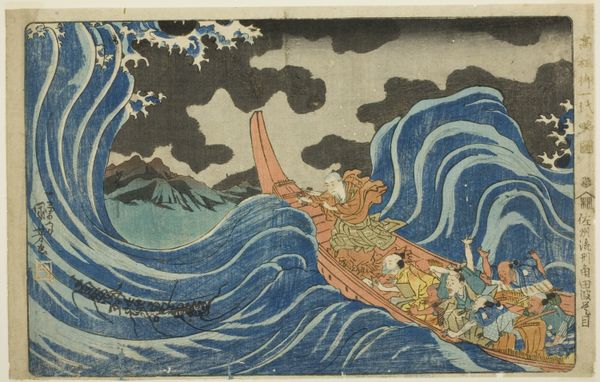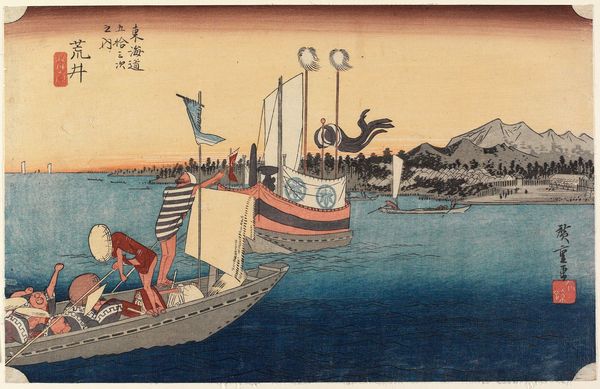
print, woodblock-print
# print
#
asian-art
#
landscape
#
ukiyo-e
#
figuration
#
woodblock-print
Copyright: Public domain
Editor: So, this woodblock print is called "Sangi Takamura, abalone fisherman." It’s attributed to Hokusai and, well, it looks pretty chaotic. There are figures swimming, boats… a rocky outcrop. It all seems so frantic. How do you interpret this work? Curator: It is chaotic, isn't it? Think about the context – Hokusai was working within the ukiyo-e tradition, which, although appreciated for its artistic merit, often served a commercial purpose, making prints accessible to a wide audience. How do you think the commercial aspect of the woodblock production has affected the choices for imagery and the narrative being depicted? Editor: Hmm… I guess the drama might make it more appealing, more marketable. But, why this specific scene? Curator: Consider the political and social currents of the time. This print and other Ukiyo-e traditions often portrayed everyday life, local legends, and, less overtly, social critiques. How might a scene of labor, even dangerous labor like abalone diving, connect with its contemporary audience in a broader narrative, and how might these depictions contribute to the public understanding of labour conditions, and even the aesthetics of Japonisme that emerged in the West? Editor: That’s a fascinating point. Seeing it now, it's more than just a chaotic scene; it is portraying real lives and labour. But how does the artistic style play into that narrative? Curator: Exactly! The composition, the colours, even the perceived "chaos" – they all contribute to constructing this image and impacting public opinion of Japanese labour. Also note the presence of the text alongside the image – consider its importance when reflecting upon intended audience and interpretation of this piece. Editor: That makes so much sense. I had focused on the chaos of the image. I appreciate the broader historical and social perspective and how its art became part of a wider social discussion. Curator: And I enjoyed your observation of "chaos" – it speaks to an aesthetic, and it brings important insights. The conversation is all part of history!
Comments
No comments
Be the first to comment and join the conversation on the ultimate creative platform.
